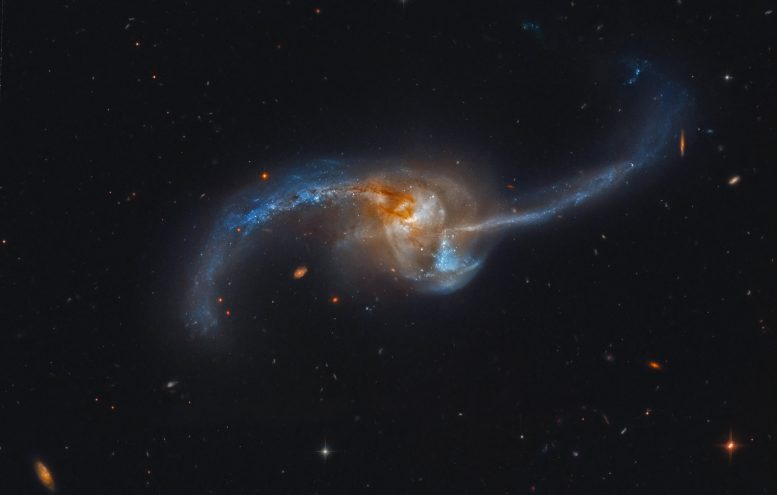
The galaxies NGC 2623 in the final stages of their titanic merger. The violent encounter has produced widespread star formation. A systematic new study of galaxy simulations examines where in merging systems the star formation activity tends to take place. Credit: Hubble Legacy Archive, ESA, NASA, APOD; Processing – Martin Pugh
Researchers from the Harvard-Smithsonian Center for Astrophysics simulated galaxy collisions under a wide range of conditions in order to investigate the question of where the induced star formation is located.
Collisions between galaxies, and even less dramatic gravitational encounters between them, are recognized as triggering star formation. Observations of luminous galaxies, powered by starbursts, are consistent with this conclusion. Numerical simulations also support this picture, with gravity funneling copious amounts of gas into the central regions of galaxies, fueling powerful bursts of star formation there. But starbursts are not ubiquitous in interacting galaxies. Triggering therefore depends on many factors, including the specific merger geometry (how they come together), the properties of the progenitor galaxies (how much gas is available for new stars), and time-scale (maybe the starburst has yet to happen, or has finished?)
CfA astronomer Lars Hernquist and six colleagues computed seventy-five simulated galaxy collisions under a wide range of conditions in order to investigate the question of where the induced star formation is located. Observational tests of this property are difficult to make because many of the most interesting cases are far enough away that individual regions can’t easily be distinguished for study. For the same reason, it is often hard to tell in which of the two merging galaxies (or both?) the starburst takes place.
The results of these simulations were clear: the interactions enhanced the star formation activity in the centers of galaxies, and in particular in roughly the central ten thousand light-years. (By way of comparison, our Sun is about twenty-five thousand light-years away from the Milky Way’s center.) The scientists discovered several other important effects of the star formation as well: it was actually suppressed in the outer regions of the galaxies (depending on the merger geometry); at later merger stages it often formed a ring around the central zone, and its strength was critically dependent on whether the rotations of the galaxies were in the same direction (star formation enhanced) or opposite (star formation suppressed). The new generation of telescopes under construction should have the capability of improving the observations, and this theoretical work will help guide the new research.
Reference: “Mapping galaxy encounters in numerical simulations: the spatial extent of induced star formation” by Jorge Moreno, Paul Torrey, Sara L. Ellison, David R. Patton, Asa F. L. Bluck, Gunjan Bansal and Lars Hernquist, 9 February 2015, MNRAS.
DOI: 10.1093/mnras/stv094
arXiv:1501.03573

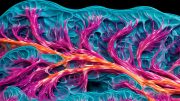
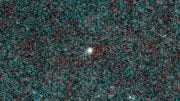
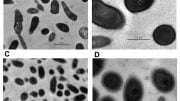



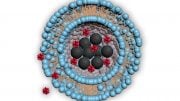
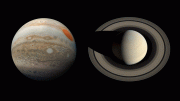
Be the first to comment on "Astrophysicists Investigate Where Stars Form in Merging Galaxies"